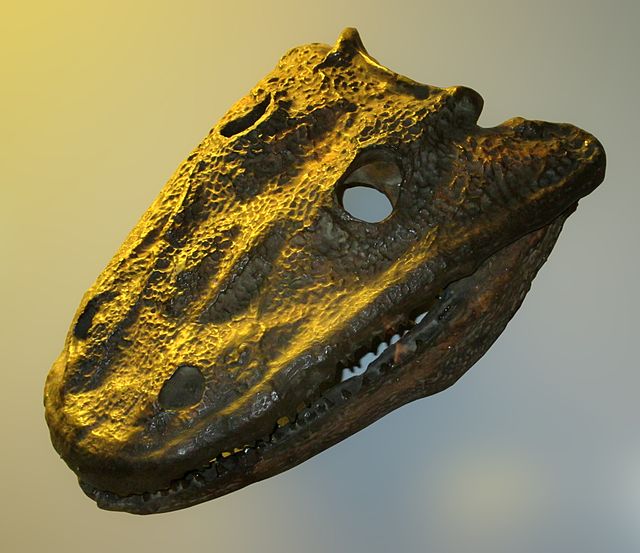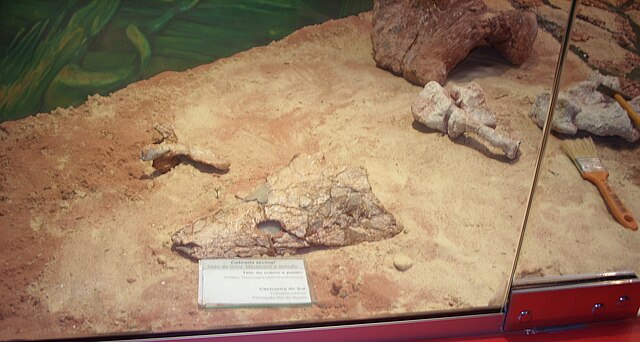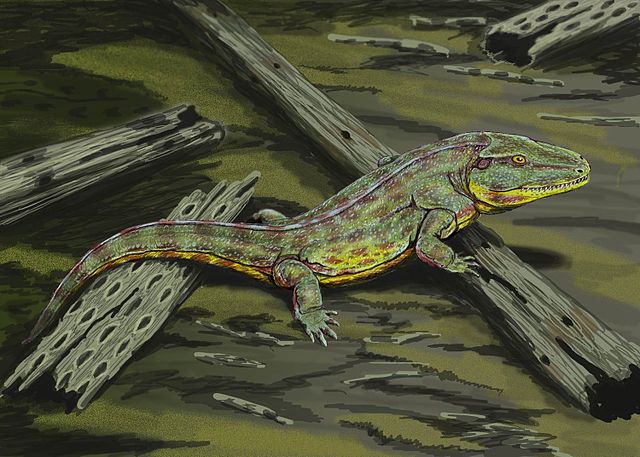Eryops is a genus of extinct, amphibious temnospondyls. It contains the single species Eryops megacephalus, the fossils of which are found mainly in early Permian rocks of the Texas Red Beds, located in Archer County, Texas. Fossils have also been found in late Carboniferous period rocks from New Mexico. Several complete skeletons of Eryops have been found in lower Permian rocks, but skull bones and teeth are its most common fossils.
Eryops
Life restoration
Cast of the skull
Temnospondyli or temnospondyls is a diverse ancient order of small to giant tetrapods—often considered primitive amphibians—that flourished worldwide during the Carboniferous, Permian and Triassic periods, with fossils being found on every continent. A few species continued into the Jurassic and Early Cretaceous periods, but all had gone extinct by the Late Cretaceous. During about 210 million years of evolutionary history, they adapted to a wide range of habitats, including freshwater, terrestrial, and even coastal marine environments. Their life history is well understood, with fossils known from the larval stage, metamorphosis and maturity. Most temnospondyls were semiaquatic, although some were almost fully terrestrial, returning to the water only to breed. These temnospondyls were some of the first vertebrates fully adapted to life on land. Although temnospondyls are amphibians, many had characteristics such as scales and armour-like bony plates that distinguish them from the modern soft-bodied lissamphibians.

Temnospondyli
A fossil of Sclerocephalus showing a large pectoral girdle and ventral plates
Sangaia lavinai in Paleorrota Geopark
Capetus, a basal temnospondyl.







